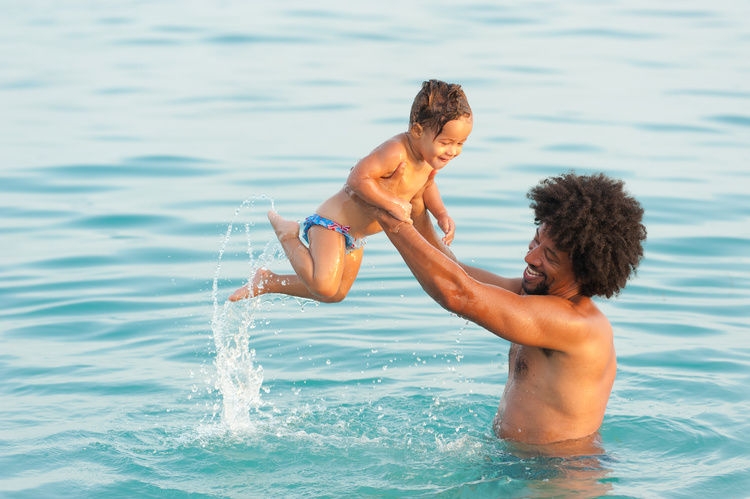We all know that water can be dangerous, especially for young children, which is why it’s so important to educate your child about water safety. Supervising your child and teaching them how to stay safe when playing with, around, or in water, is a valuable way to minimize risk when they do find themselves in those more slippery situations.
Bath time
Always supervise your child in the bath. If you forget something and need to leave the room, take your child with you. Always keep an eye on your little one around any kind of water. Read our article ‘Bath Safety for your Toddler’ for more info.
Swimming
Babies can be in the water from birth, but swimming is a skill that needs to be learned. If you take your baby or toddler swimming before any lessons, always keep your hands on them in the water. It is best to wait at least two months from birth before taking your baby swimming. New mothers should avoid pools for at least six weeks after birth, or until any vaginal bleeding has stopped.
Public pools are typically too cold for a baby under six months – the water should be above 32° to be comfortable for a newborn. Older babies and toddlers can be in public pools. Babies under six months shouldn’t stay in the water for longer than 10 minutes, and babies under 12 months should not stay in water for longer than 30 minutes – babies cannot regulate their temperature very well yet, so they can quickly get too cold.
You might want to check with your doctor if your child can go to the pool before they have all the vaccinations.
If you’re introducing your little one to a private pool, such as your own or a friend’s, make sure the chemical balance is safe. If you’re unsure, your local pool store should be able to test for you. Chlorine can irritate babies’ sensitive skin, so be cautious and keep an eye out for rashes, dryness, or irritation.
Introduce your baby to the pool at a pace that works for them. Try not to force them too hard too fast, as this could be a traumatic experience if they’re feeling anxious about water. Try sitting by the pool with your child, perhaps making some splashes.
When it’s time to get in, cradle or hold your baby with their head above the water and move them back and forth so they can get used to enjoying the sensation.
From six months, you should be able to find some kind of water familiarisation classes for your little one. Continuing swimming lessons as they grow up can be great for their self-esteem, strength and health, and knowledge of water safety.
If you take your child to a body of water outside like a river, lake, outdoor pool, or beach, make sure to dress them in long sleeves, a hat, and sunscreen. Make sure the current isn’t too strong, and you can easily keep a good grip on your little one. Water should be warm enough and clean. Watch out for stagnant water in lakes and rivers – if the water isn’t flowing, it can grow harmful bacteria. Make sure the baby doesn’t swallow any water.
Water play
Playing with water can help develop motor reflexes in toddlers. Splashing, swirling, pouring and other movements can not only help develop fine motor skills and gross motor skills but can also start conversations about the skills they’re learning and how to stay safe around water.
Explain to your little one that water can be dangerous, that they should never put their head underwater without you around, should never run on slippery surfaces, and should never try to turn on a tap or play around or in water without your help.
As your child grows up, swimming and playing in water can become a great hobby, form of exercise, or way to develop confidence. Starting early with a focus on safety can help to set them up for safe water experiences in the years to come.



